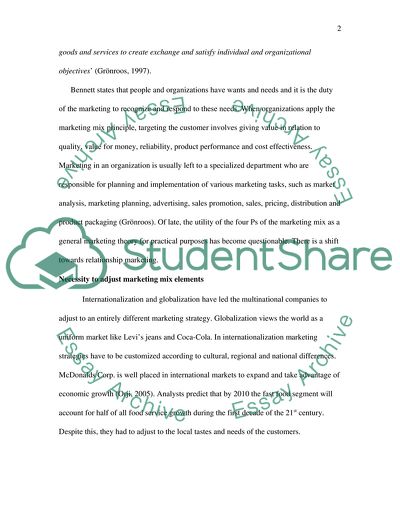Cite this document
(The Aspects of Marketing Mix Coursework Example | Topics and Well Written Essays - 2500 words, n.d.)
The Aspects of Marketing Mix Coursework Example | Topics and Well Written Essays - 2500 words. https://studentshare.org/marketing/1711613-discuss-how-the-marketing-mix-can-be-adjusted-to-meet-the-needs-of-two-contrasting-international-markets-use-examples-to-illustrate-your-answer
The Aspects of Marketing Mix Coursework Example | Topics and Well Written Essays - 2500 words. https://studentshare.org/marketing/1711613-discuss-how-the-marketing-mix-can-be-adjusted-to-meet-the-needs-of-two-contrasting-international-markets-use-examples-to-illustrate-your-answer
(The Aspects of Marketing Mix Coursework Example | Topics and Well Written Essays - 2500 Words)
The Aspects of Marketing Mix Coursework Example | Topics and Well Written Essays - 2500 Words. https://studentshare.org/marketing/1711613-discuss-how-the-marketing-mix-can-be-adjusted-to-meet-the-needs-of-two-contrasting-international-markets-use-examples-to-illustrate-your-answer.
The Aspects of Marketing Mix Coursework Example | Topics and Well Written Essays - 2500 Words. https://studentshare.org/marketing/1711613-discuss-how-the-marketing-mix-can-be-adjusted-to-meet-the-needs-of-two-contrasting-international-markets-use-examples-to-illustrate-your-answer.
“The Aspects of Marketing Mix Coursework Example | Topics and Well Written Essays - 2500 Words”. https://studentshare.org/marketing/1711613-discuss-how-the-marketing-mix-can-be-adjusted-to-meet-the-needs-of-two-contrasting-international-markets-use-examples-to-illustrate-your-answer.


